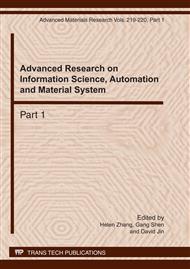p.1423
p.1427
p.1431
p.1436
p.1440
p.1445
p.1450
p.1454
p.1459
The Error Analysis and Data Processing of Leaf Water Potential
Abstract:
For the implementation of precision irrigation (PI), it is most important to measure precisely plant water potential. The traditional measuring instruments still can not meet the need for continuous automatic detection of plant water potential, and have difficulty detecting living plant water potential. Plant water potential soft- sensing is one of the ways worth exploring. The first thing we should think about is the accuracy of the data. Filter the information of plant water potential acquired by the detecting system and further analyze this information to discover the change rules on the plant water potential.
Info:
Periodical:
Pages:
1440-1444
Citation:
Online since:
March 2011
Authors:
Keywords:
Price:
Сopyright:
© 2011 Trans Tech Publications Ltd. All Rights Reserved
Share:
Citation:


